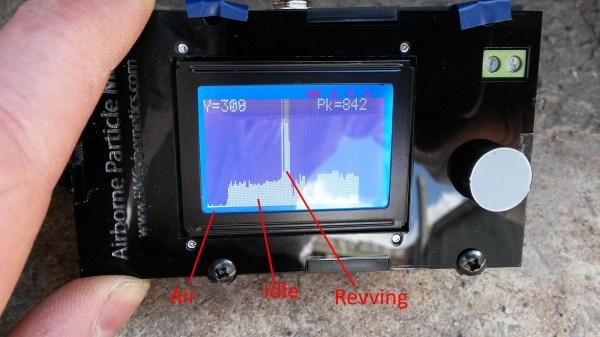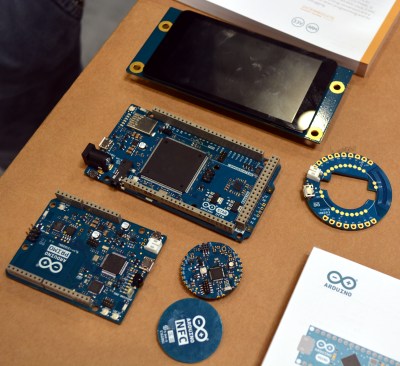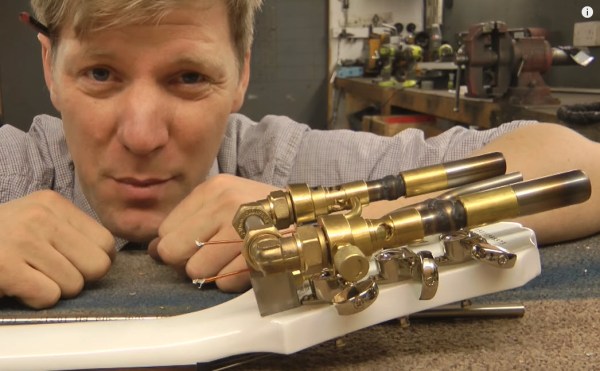Everyone’s favorite safety-tie-wearing-eccentric-inventor, [Colin Furze], is back at it again, this time making a flamethrower guitar — sponsored by Intel!?
As an ex-plumber, [Furze] is a master fabricator, and he’s brought many amazing mechanical inventions to life. In this video, perhaps for the first time, he’s integrated an Intel Curie Arduino in it, for a bit more fine control.
He’s hacked apart a couple of propane blow-torches, milled and lathed his own fittings and manifolds, and even TIG welded together a pressure vessel for the fuel — kids, do not try this at home!
The two blowtorches act as pilot lights for a third gas supply line to make the big firing explosion — the plan for the Arduino? To blast off the fire at certain parts during the song, add timing, or even just set up some cool patterns.
Did we mention he’s also got his own custom propane fueled guitar amp to go with it??
Continue reading “Building A Flamethrower Guitar To Really Rock Out With” →



 The new boards are called Arduino Primo, Arduino Core, Arduino Alicepad, and Arduino Otto.
The new boards are called Arduino Primo, Arduino Core, Arduino Alicepad, and Arduino Otto.














